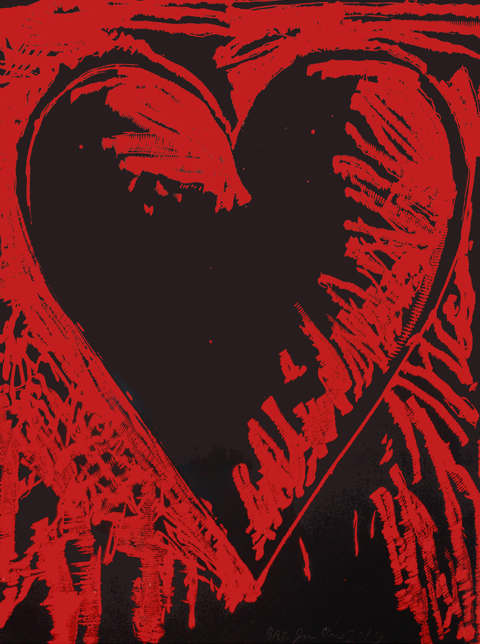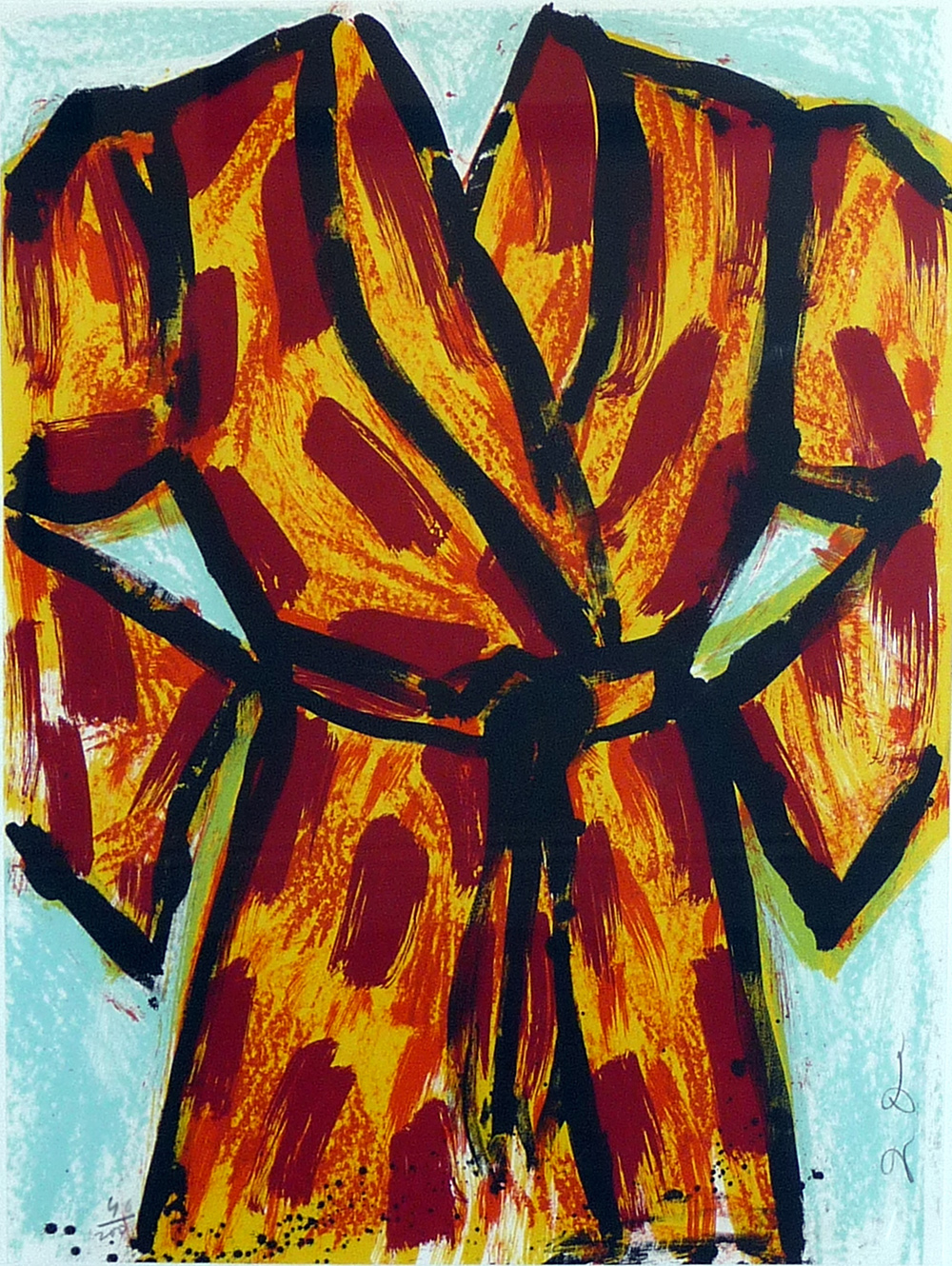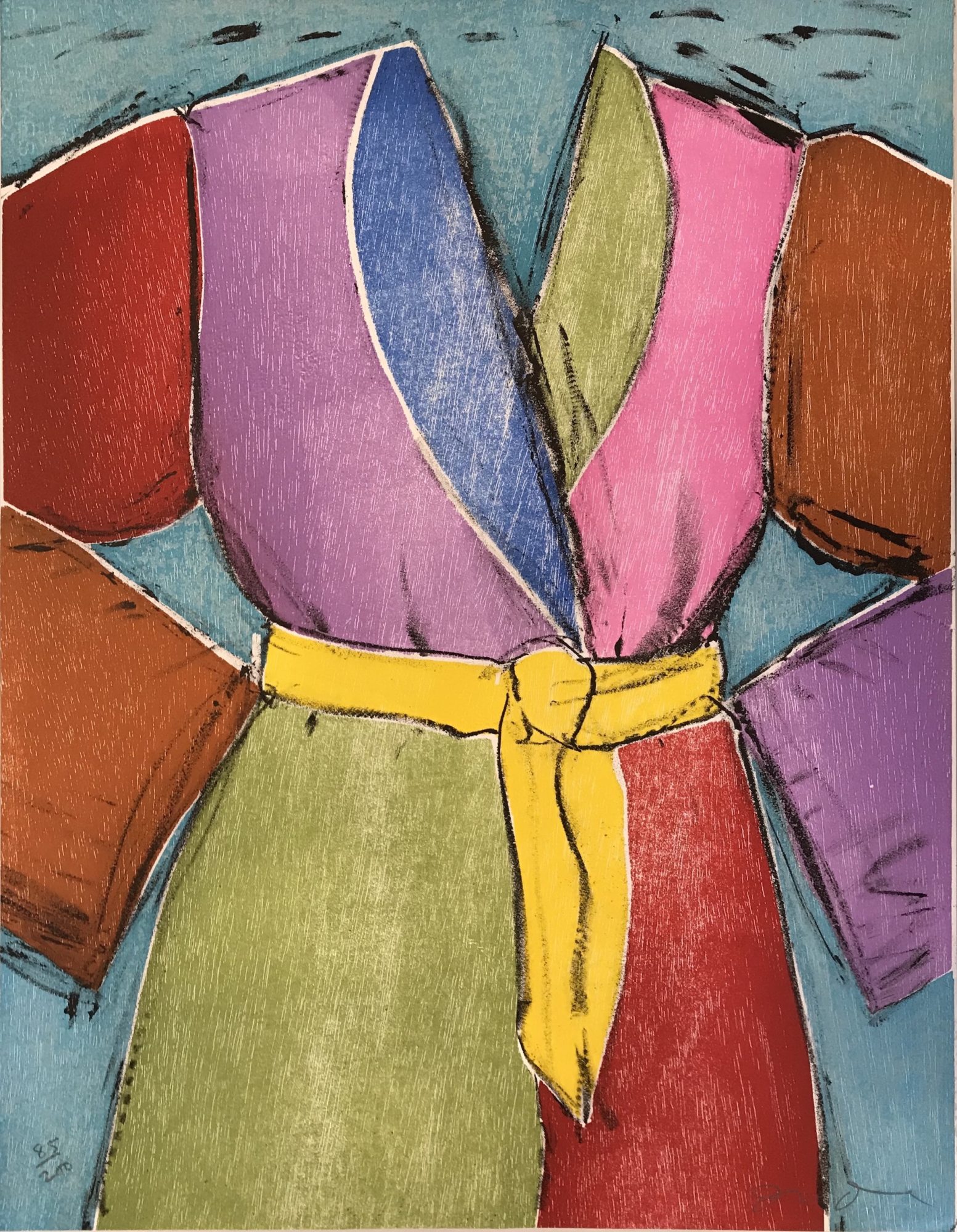Jim Dine – The Black and Red Heart
Jim Dine, The Black and Red Heart is an original Woodcut with hand drawing on Lenox 100 paper. This print is from the signed, dated and numbered edition of 30.
Jim Dine has created a vocabulary out of subjects that have a child-like appeal, such as tools, birds, and hearts. These personally nostalgic symbols are also commonplace and universal, creating work that is both autobiographical and open to interpretation. Dine was also instrumental in the first “Happenings,” a progenitor of Performance art. These Happenings challenged the seriousness and elitism of Abstract Expressionism, de-emphasizing the art object in favor of a performative, interactive, process. Over his career, Dine has both questioned the status of the artwork and continued a tradition of making work full of symbolism and allegory.
| Title | The Black and Red Heart |
|---|---|
| Medium | Woodcut |
| Year | 2013 |
| Edition | Ed. of 30 |
| Catalogue Raisonné | NA |
| Signature | Signed in Pencil |
| Size | 64 x 48 (in) 162.5 x 122 (cm) |
| Price | Price on Request |
Description
Jim Dine, The Black and Red Heart is an original Woodcut with hand drawing on Lenox 100 paper. This print is from the signed, dated and numbered edition of 30.
Jim Dine has created a vocabulary out of subjects that have a child-like appeal, such as tools, birds, and hearts. These personally nostalgic symbols are also commonplace and universal, creating work that is both autobiographical and open to interpretation. Dine was also instrumental in the first “Happenings,” a progenitor of Performance art. These Happenings challenged the seriousness and elitism of Abstract Expressionism, de-emphasizing the art object in favor of a performative, interactive, process. Over his career, Dine has both questioned the status of the artwork and continued a tradition of making work full of symbolism and allegory.
Additional information
| Title | The Black and Red Heart |
|---|---|
| Medium | Woodcut |
| Year | 2013 |
| Edition | Ed. of 30 |
| Catalogue Raisonné | NA |
| Signature | Signed in Pencil |
| Size | 64 x 48 (in) 162.5 x 122 (cm) |
| Price | Price on Request |




